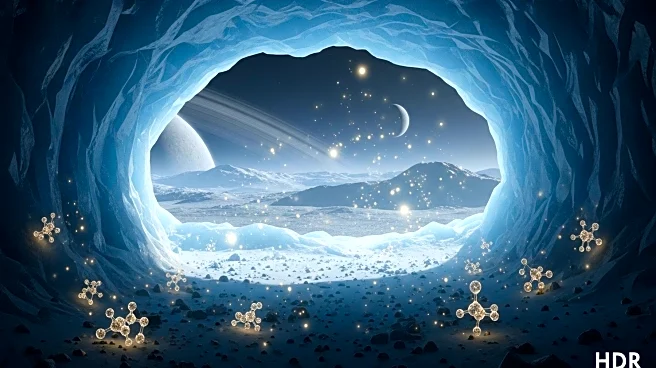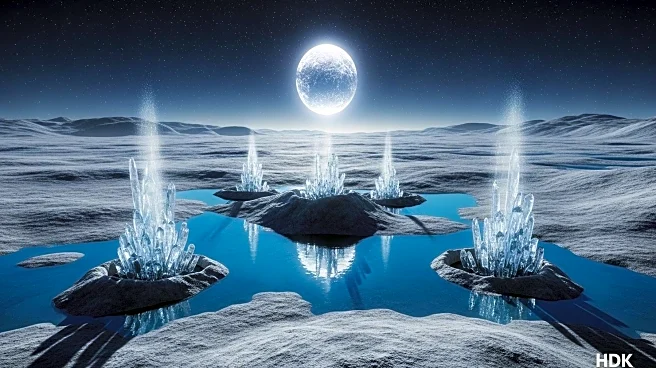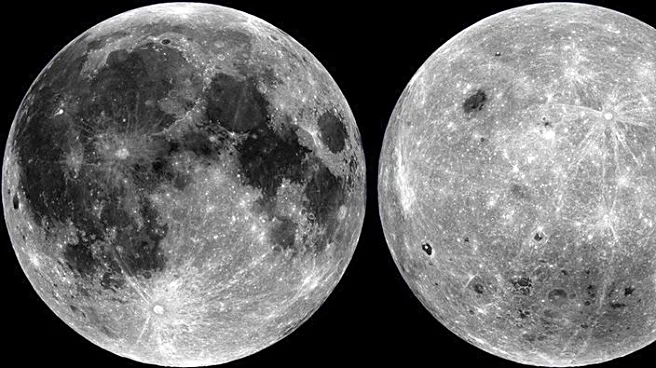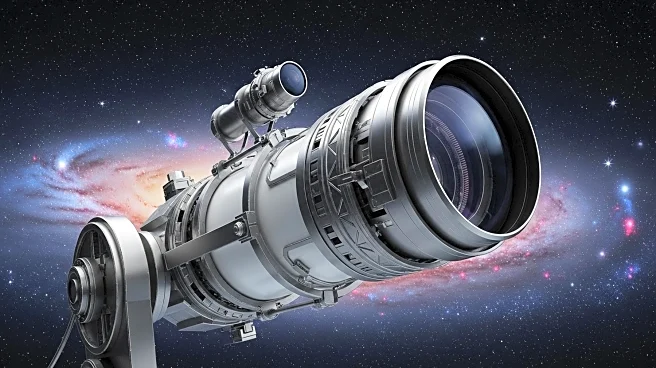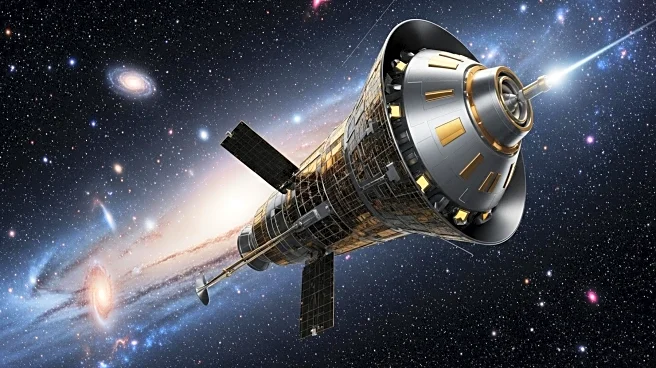What's Happening?
Scientists have discovered new types of organic compounds in the icy geysers of Saturn's moon Enceladus, suggesting that the moon may have conditions suitable for life. This discovery was made using data from NASA's Cassini spacecraft, which conducted a close flyby of Enceladus in 2008. The moon, known for its hidden ocean and water plumes, has been a focus in the search for extraterrestrial life. The study, published in Nature Astronomy, involved analyzing fresh ice grains from the moon's geysers, which provided clearer insights into the chemical composition of the subsurface ocean. The presence of these organic molecules enhances the moon's potential habitability, although no evidence of life has been found.
Why It's Important?
The findings from Enceladus are significant as they add to the growing body of evidence that moons with subsurface oceans could be prime locations for the emergence of life beyond Earth. The discovery of organic compounds in the moon's geysers suggests that Enceladus has the necessary ingredients for life, similar to hydrothermal vents on Earth. This research underscores the importance of further exploration of icy moons in our solar system, as they may hold clues to understanding the potential for life elsewhere. The study also highlights the need for future missions to Enceladus to explore its habitability more thoroughly.
What's Next?
Following these findings, there is a push for new missions to Enceladus to further investigate its potential for life. The European Space Agency is in the early stages of planning a mission to land on the moon, while China has also proposed a landing mission. Meanwhile, NASA is focusing on Jupiter's moon Europa, with the Europa Clipper mission set to begin in 2030. These missions aim to explore the icy moons' subsurface oceans, which are considered promising sites for discovering extraterrestrial life.
Beyond the Headlines
The discovery on Enceladus raises broader questions about the conditions necessary for life and the potential for life in environments vastly different from Earth. It challenges scientists to rethink the criteria for habitability and the types of environments where life could exist. The study also emphasizes the role of international collaboration in space exploration, as missions to these distant moons require significant resources and expertise from multiple space agencies.

